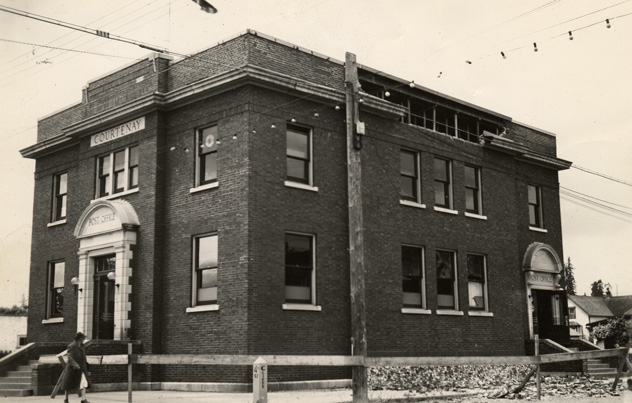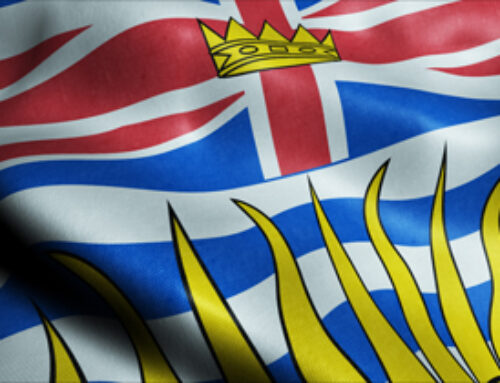
CDM 972.51.14
This year, June 23 marks the 75th anniversary of Vancouver Island’s largest historic earthquake, a magnitude 7.3 event with the epicenter located in the Forbidden Plateau region. The tremors rocked the west coast from Port Rupert, BC to Portland, OR.
The shaking demolished 75% of the chimneys in Cumberland, Courtenay and Union Bay, and caused damage to buildings in Comox, Powell River and Port Alberni. Tall buildings in Vancouver swayed back and forth, power was disrupted and a small fire started in the Hotel Vancouver. Lighthouse keepers along the coast recorded damages such as shattered windows and smashed dishes, and in Washington State, bridges and buildings were damaged in urban centers. The earthquake was so powerful, it knocked the needle off a seismograph at the University of Washington. In Seattle, the flagpole on the top of the Sears building — the current Starbucks headquarters building — whipped back and forth so violently that witnesses thought it might snap off.
A number of landslides were recorded, too. The most dramatic land slide was a rock fall from Mt. Colonel Foster in Strathcona Park, which was not witnessed but left plenty of evidence — when a chunk of the mountain slid into Landslide Lake, it created a massive wave that washed over the lip of the lake and down through the Elk Valley, destroying a swath of forest 3 kilometers long.
An Alberni farmer quoted in Victoria’s Daily Colonist said, “I was just finishing my chores when I saw the pasture land in the distance begin to wave like ocean swells.” (Daily Colonist, June 25, 1946).
While some injuries came from falling masonry or glass, only two deaths were attributed to the quake: Jacob L. Kingston, a Seattle resident aged 69, suffered a heart attack, and Daniel Fidler, aged 50, was drowned when his small boat was swamped by a wave off Mapleguard Spit near Deep Bay. In 1946, Vancouver Island was sparsely settled, with a population of just 190,000 people in total, and luckily, the earthquake occurred at 10:15 am on a Sunday morning, when schools were empty and streets were quiet. Things could have been worse, for example, a chimney crashed through two floors of the Courtenay Elementary School, demolishing both classrooms where 60 children would have been if it were a school day.
Vancouver Island is part of the Cascadian Subduction Zone, a convergent plate boundary that stretches from Northern Vancouver Island to Northern California, and earthquakes are not uncommon here. According to the Canadian National Data Centre for Earthquake Seismology, approximately 400 earthquakes occur each year, but most are too small to be felt by residents. The 1946 Vancouver Island Earthquake remains the largest and most impressive tremor to strike the region in historic times, and it serves as a reminder of how powerful and awe-inspiring the forces of nature can be.





